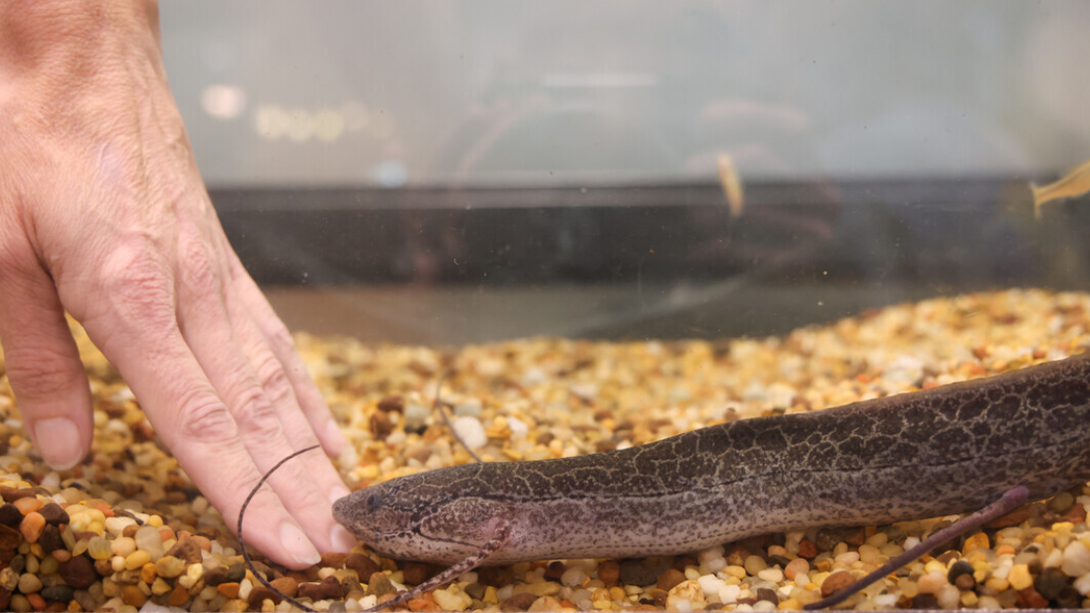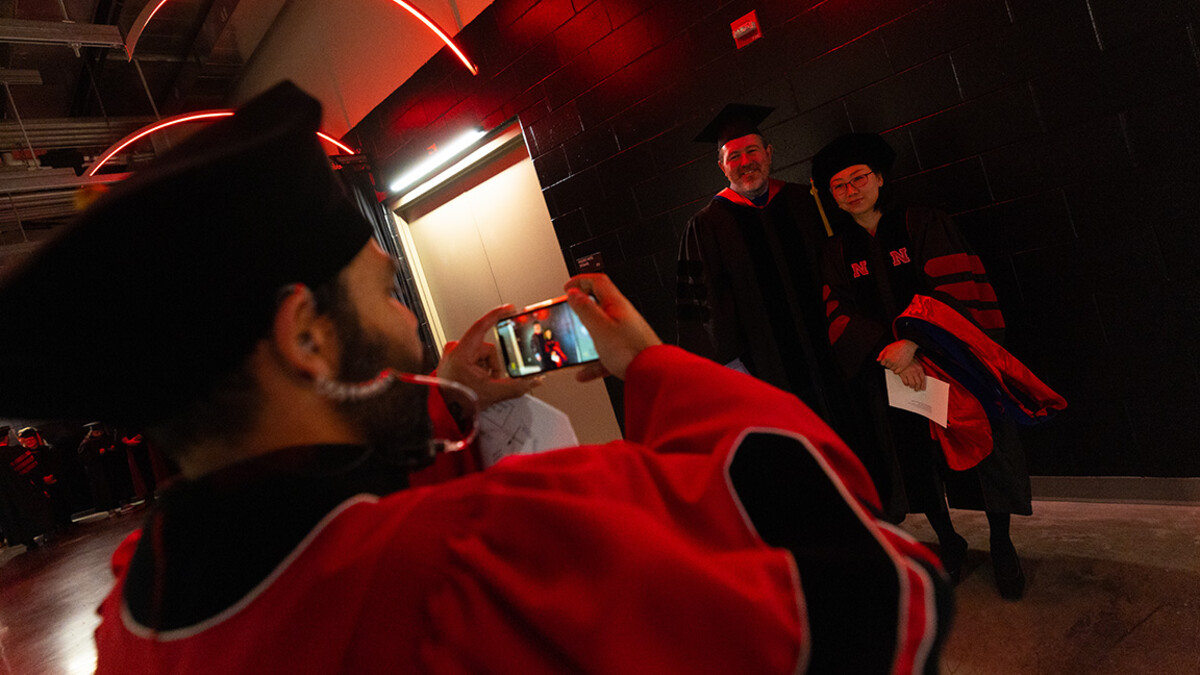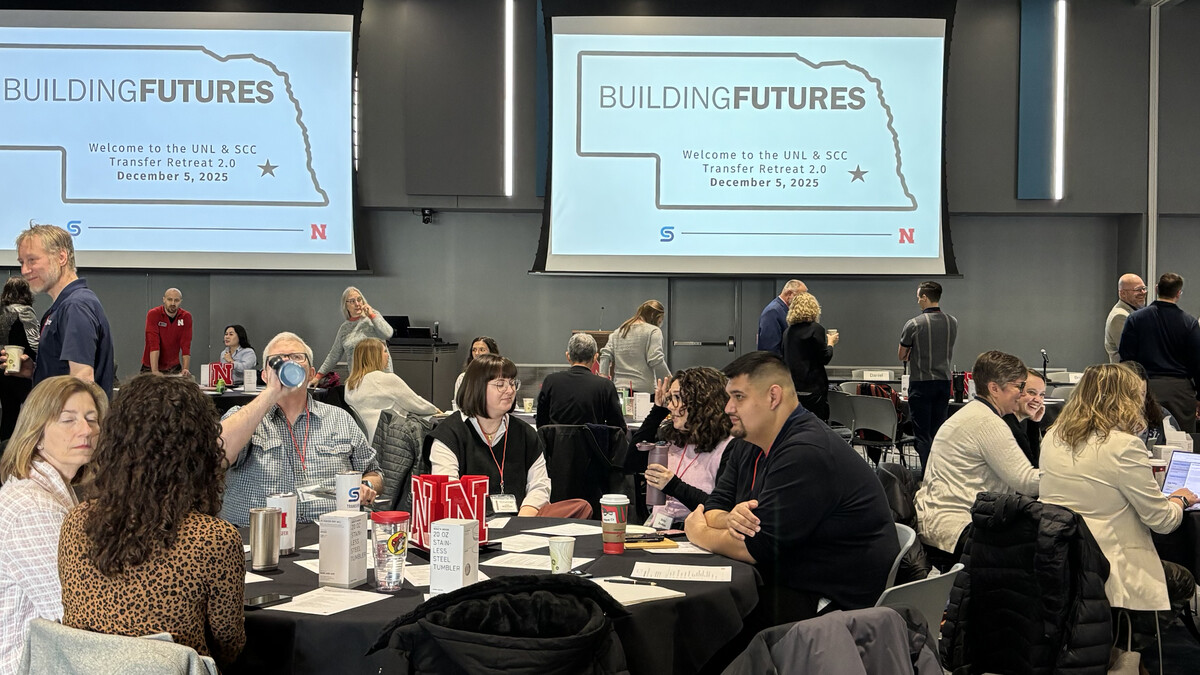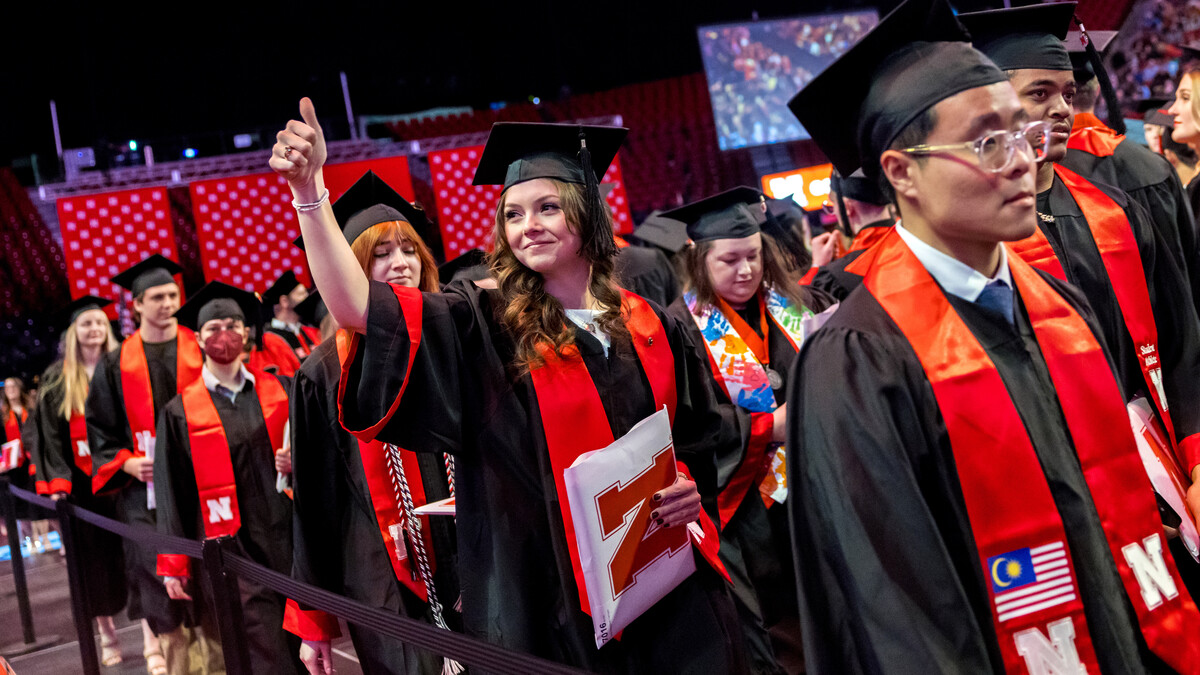
In April, the School of Natural Resources welcomed its newest family member to Hardin Hall. After nearly 100 votes from students, staff and the public, it has received its name.
Now String Bean, a juvenile African lungfish, resides in the student center and welcomes all who come to visit.
String Bean was transferred to the School of Natural Resources from the School of Biological Sciences when they cleared out some of their older displays. The name on aquarium read “Juanita,” which referred to the African lungfish on display when Lindsey Chizinski was a student there. As an aquatic ecologist and manager at school’s Aquatic Biodiversity and Conservation Lab, Chizinski thought the name was funny because, “One, that’s not an African name, and, two, we don’t even know if it’s a girl,” she said.
So, inspired by the brackets for March Madness, Chizinski decided to hold a naming contest and see which name rose to the top.
She started with the fisheries club, which thought up more than 20 options. Chizinski then took that list to her ichthyology class, where students narrowed the names to six — Greg, Ponyo, Proto (short for “protopterus,” the genus name for African lungfish), Tank, Corn Cob and String Bean.
Flyers were hung up. A QR code was displayed on the School of Natural Resources’ computer screens. And the contest was on.
“It was a fun thing to get students involved with,” Chizinski said. “And now, they’re invested in String Bean.”
The name String Bean won by a small margin, with Greg and Proto in a close second and third place, respectively.
African lungfish (String Bean is of the marbled or Ethiopian variety) are a freshwater fish unique in the aquatic world because they have gills and lungs, so while they can breathe under water they will also resurface to breathe air. In addition, because they are native to regions with traditionally low rainfall, they will often burrow themselves in mud, slow down their metabolic rate, and remain dormant for months and years, reemerging when rain falls again.
“There have even been reports of them being accidentally encased in the bricks of adobe homes, and then when when the rains come, they work their way out of the bricks,” Chizinski said. “They're just incredibly adaptable.”
Lungfish are also known to be the closest living relatives to tetrapods — four-footed animals. The skeletal structure of the pectoral and pelvic fins looks more like limbs than fins. So String Bean will be a unique living example for students studying ichthyology and vertebrate zoology.
While fairly nondescript among the other animal display in Hardin Hall, String Bean adds life and interest to the student space.
“It has been a way to build up that familial, cooperative spirit in SNR,” Chizinski said. “I think people will come back and visit us after they graduate, and they’ll make sure to say hi to String Bean.”







